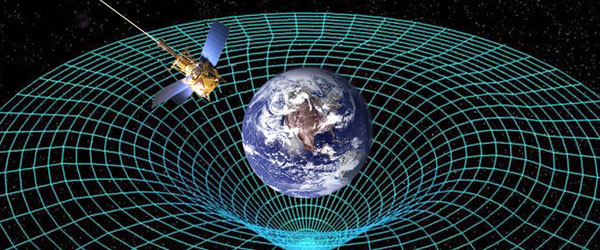Gravity 101 – Rocket Science
I’ve decided to stop numbering these articles and start referring to specific topics. My primary reason for this change is that I’ve been getting some interesting questions on the side and I might have to throw together a gravity related article at the drop of a hat (or a question). At this rate we might even get to Gravity 201. In the first three articles we learned a bit about basic gravity concepts and orbital mechanics (Part I, Part II, and Part III) and I keep promising to cover the mechanics of getting into and out of orbit. This time I’m going to finally fulfill that promise so put your seat belts on, here comes the Rocket Science.
To begin we need to understand the basic concepts of getting something moving. Fortunately, all we really need are Newton’s three laws of motion, if you’ve forgotten them here they are:
Newton’s First Law
An object at rest tends to stay at rest; an object in motion tends to stay in motion. These two facts hold unless the object is acted upon by an external force. For us this means that we need to find a way to push on our rocket otherwise it’s just going to sit there.
Newton’s Second Law
We’ve seen this one before:
$latex F =ma$.
This tells us how much force we need to apply to our rocket to get it moving. Our rocket will have a particular mass m and a is the acceleration that will be achieved. It should be obvious that the larger the mass of our rocket the greater the force we will need to get it moving.
Newton’s Third Law
Every action has an equal and opposite reaction. Well now, we’re getting somewhere. This law gives a clue as to how we can generate the force to get our rocket moving; if we throw something out of the back end of our rocket hard enough it will push our rocket off the launch pad.
Just to clarify, let me back up a bit. The first law tells us that we need to act on our rocket with some kind of force to get it moving. The second law tells us how much force we need depending on the mass of our rocket. The third law tells us how to create the force that will get our rocket moving. This sounds simple enough, but we need to figure out how to throw stuff out of the rocket with enough force to get it moving.
Now we get to talk a bit about rocket engines. A rocket engine burns fuel into super-heated gasses that are expelled at high velocity. Realizing that the gasses have to go from zero to high velocity in a short amount of time means that there is a high acceleration involved. This brings us back to Newton’s second law, the gasses have mass and acceleration so there is a force generated. The mass might not be all that large compared to the mass of our rocket but the acceleration usually huge so we get a large force. This force is called Thrust and a great deal of rocket science is figuring out ways to increase the thrust while reducing the amount of fuel needed (more on that later}.
The Saturn V rockets that sent men to the moon used kerosene and liquid oxygen to fuel their engines. Kerosene (a refined petroleum product) is also used in jet engines; they used the liquid oxygen because there is no air in space to react with the kerosene (the upper stages used liquid hydrogen and liquid oxygen). Even within Earth’s atmosphere when oxygen is available the use of liquid oxygen maximizes the fuel combustion. The Saturn V engines produced around 7.6 million pounds of thrust at liftoff. The Space Shuttle main engine used liquid hydrogen and liquid oxygen for its main engine and solid fuel rocket boosters (really awesome video here of cameras mounted on the boosters) and the total thrust was on the order of 7.8 million pounds.

What you should be getting from this is that it takes an incredible amount of thrust to get our rocket off of the launch pad. To get into orbit we have to get our rocket up to orbital speed at the proper altitude (for the International Space Station that’s 17,488 miles per hour at 212 miles above sea level). So why do we need so much thrust? Consider this: the Saturn V, fully loaded with fuel ready for liftoff, weighed around 6.5 million pounds. The Space Shuttle, with the boosters and fuel tank, tipped the scale around 4.4 million pounds and could also take up to another 65,000 pounds of payload. It should be obvious that the thrust needed to get the rocket moving has to be greater than its weight; the weight is the force due to gravity keeping it on the ground.

So why are rockets so heavy to start with? The Saturn V was capable of transporting 120 tons (240,000 pounds) to Earth orbit. That seems to be a pretty big payload but its about 4% of the total weight at liftoff. For a fully loaded Space Shuttle (65,000 pounds of payload), the payload is about 1.5% of the total liftoff weight. The rest of the weight is devoted to fuel, containers for fuel, and rocket engines. Rocket designers realized long ago that it is beneficial to build rockets with sections that can be discarded as they run out of fuel to increase the efficiency of the overall system. So the vast majority of the mass of our rocket sitting on the launch pad is fuel and other stuff we’re going to throw away before we get into orbit.
So now we’re in orbit, it took a lot to get here but we’ll stay here unless we do something. I feel that I have to mention that fact, this week I was watching some of the original Star Trek episodes and a couple of them talked about having enough energy to get into orbit but not enough energy to stay in orbit. I wanted to grab Scotty by the neck, shake him around a bit and teach him a bit about basic physics (he was an Engineer, not a physicist). Unless your orbit is so low that the upper atmosphere is thick enough to slow you down significantly, then you will stay in orbit for a very long time with no extra energy input.
Okay, enough ranting. Eventually we will want to go home. I’m quite certain that most everyone is somewhat familiar with the concept of orbital re-entry; we all know that it’s a traumatic experience but does it have to be that way?
Well yes and no. No because, theoretically. all we have to do is to reduce our speed from orbital velocity in orbit to zero at sea level. This seems simple enough but changing velocity means expending fuel and fuel means weight. Adding more weight to our rocket means that we need even more fuel to get into orbit. Even though we have discarded a large portion of our original mass we still need a vast amount of fuel to slow us down to zero. If we are at the International Space Station that means that we are going 17,488 miles per hour and we need to get to zero. This means that we would have to carry much smaller payloads with us or build much larger booster systems. Yes, because we want to deliver as much payload into orbit as possible for the least amount of money so we have to use the old fashioned way.
The old fashioned way is to carry enough fuel to slow down our rocket enough to drop into the upper atmosphere and let the atmospheric friction slow us down. If you recall the previous articles you will know that slowing down in orbit actually mean dropping into a lower orbit and speeding up. This seems counter-intuitive but being in orbit is a delicate balance of speed and gravity; in a sense your speed counteracts the Earth’s gravitational pull. As you slow down in orbit the Earth’s gravity takes over and you speed up downward. Because of this, the space shuttle’s speed when it entered the upper atmosphere was around 18,000 miles per hour.
This may seem excessive but the Apollo crafts re-entered the upper atmosphere at roughly the same speed that they escaped from Earth’s orbit – 25,200 miles per hour (seven miles per second). I think it’s obvious that the faster you are going when you hit the atmosphere (“hit” is kind of a harsh term, it starts out very thin and gets thicker as you go lower), the faster you will slow down. This is called deceleration, the opposite of acceleration. and we can control it a bit by altering the angle in which we enter the atmosphere, but this is a delicate operation. For the Apollo spacecraft the optimal angle of entry was between 5.3 and 7.7 degrees. Less than 5.3 and the craft would bounce off the atmosphere and return to orbit, more than 7.7 and the g-forces would crush the occupants This seems like a scarily slim margin but even the rudimentary computers in the Apollo capsules handled it quite easily.
The biggest problems we face in re-entry are the heat and aerodynamic stress of going really fast through air. The heat and stress come from friction, compression, and turbulence. The early spacecraft (Mercury, Gemini, Apollo etc.) utilized an ablative heat shield system. “Ablative” is a fancy word that means that it’s designed to burn off in a controlled fashion. As the heat shield burns off it carries heat away from the spacecraft. The shape of the heat shield, a smooth dish, was designed to create a buffer of compressed air beneath the craft further shielding it from the high speed stream of air and it reduced the stress and turbulence to a minimum by presenting a smooth surface to the air stream. The Space Shuttle, having been designed to be re-usable, utilized a system of high-tech ceramic tiles formulated for extreme heat dissipation.
Though the Space Shuttle had improved heat dissipation, it had to deal with compression and turbulence to a higher degree because of its shape; it had wings. You can do a simple experiment to illustrate the difference between the smooth capsule design and the wings of a space shuttle the next time you are riding in a car on the highway. If you put your had out the window in a fist you will simulate the capsule and if you flatten out your hand tilted upward (the shuttle entered the atmosphere tilted upward about 40 degrees) you simulate the shuttle. You will notice that there is far less pressure on you fist than your flattened hand. You also have to work a little harder to hold your flattened hand steady, this is due to the turbulence of the air flowing around your hand. At high velocity this turbulence put a lot of stress on the space shuttle so it had to be very sturdy.
Another difference between the space capsule and space shuttle was the path taken into the atmosphere. Once the capsules entered the atmosphere they had little or no control so they dropped like a rock until they had slowed down enough to deploy parachutes. The shuttle, because it had wings with control surfaces, executed a series of S curves as it entered the atmosphere. If you have ever skied or snowboarded then you understand this concept. The slalom turns slow the craft down even more than just dropping straight in. After that the shuttle entered into a glide path to a soft landing.
If you were just dying to see some hardcore math equations here’s Tsiolkovsky’s ideal rocket equation, I’m not going to go into the details, I’ll just let you admire the beauty and simplicity:
![]()
So what have we leaned today?
- Newton was the first space lawyer.
- Rocket science is hard, oh wait, we already knew that. I just showed you why.
- Ski bums understand rocket science, at least a little bit.





Thanks for the articles Blaise.
I was just reading FF volume 3 and they stated that they rode (somehow) up to a satellite in geosynchronous orbit over New York. I thought about writing an article about how you can have a geosynchronous orbit that passes over New York you can’t have a geostationary orbit over New York since it isn’t on the equator.
TV satellite dishes in America all point south since those satellites are in geostationary orbits over the equator (which is south of here as it turns out).
As a physics teacher and astronomy enthusiast I have really appreciated your articles on gravity and motion in space. Keep up the great work.